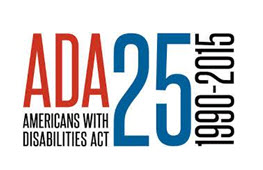 The Americans with Disabilities Act (ADA) is 25 years old this month. From transit to housing to access to democracy, the ADA has had a huge and positive impact on the Metropolitan Council and our customers.
The Americans with Disabilities Act (ADA) is 25 years old this month. From transit to housing to access to democracy, the ADA has had a huge and positive impact on the Metropolitan Council and our customers.
“We should all be grateful that we live in a country that cares about all people and not just the temporarily able-bodied,” said Wanda Kirkpatrick, the Council’s Director of Equal Opportunity. “It’s not like this in other places.”
ADA guarantees transit service to people with disabilities
The Twin Cities metro area is a bit unusual in that the region had a very robust system of transit for people with disabilities long before it became a federal requirement. In 1990, the year the ADA passed Congress, Metro Mobility—overseen by the former Regional Transit Board—provided 1.5 million rides. Its service area was larger than that required by ADA.
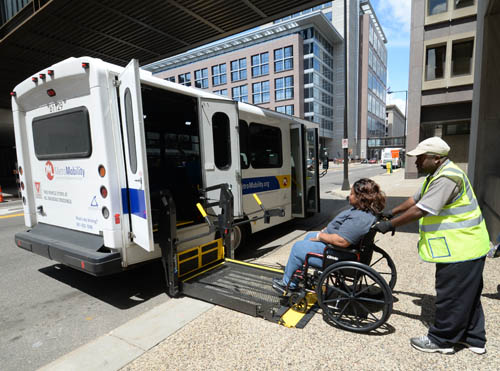 But the service was politically vulnerable. “Funding was not guaranteed,” said Andrew Krueger, manager of today’s Metro Mobility. “With passage of the ADA, transit service for people with disabilities became a civil right, not just something nice we do.”
But the service was politically vulnerable. “Funding was not guaranteed,” said Andrew Krueger, manager of today’s Metro Mobility. “With passage of the ADA, transit service for people with disabilities became a civil right, not just something nice we do.”
“The ADA formalized what the eligibility criteria would be,” Krueger said. “Before then, that was a local decision.”
A few years after ADA became effective, the Regional Transit Board was dissolved and its functions merged into the Council. The road to updating and reorganizing Metro Mobility was a bit rough, but by the late 1990s the service came into its own again.
Dave Bruflodt, Edina, served on the Council’s Transit Accessibility Advisory Committee from 1993 to 2012. He said that over time Metro Mobility has gotten more stable and very reliable.
“Metro Mobility really gives me the opportunity to get around, to be out and about in the community, and to have a life other than as a shut-in,” Bruflodt said.
In 2014, Metro Mobility provided nearly 2 million rides. Each year the ridership grows. More about Metro Mobility.
Reliable service allows people to keep jobs
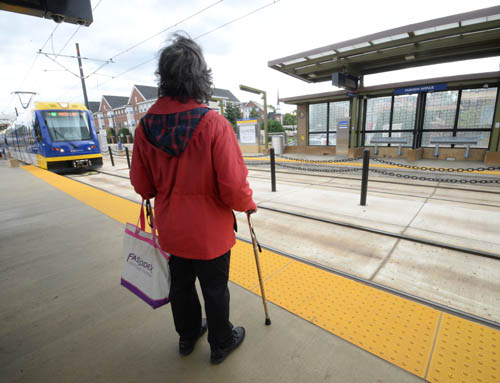
The impact of giving people with disabilities civil rights was dramatic, said Andy Streasick, Customer Service Manager for Metro Mobility.
“The ADA guaranteed that what we had in place would be reliable and was here to stay,” Streasick said. “A person can count on it to get to work every day so they can hold down a job. We are not allowed to deny a single trip to an eligible Metro Mobility rider.”
In recent years, ADA regulations have focused on improving the quality of service, for example, limiting the amount of time a phone customer can be put on hold.
Metro Mobility continues to serve, under state law, a larger area than required by the ADA. In 2014, the service provided nearly two million rides to 17,736 active users.
Regular-route transit is accessible, too
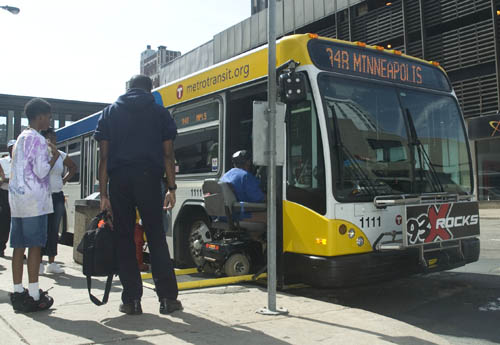 ADA covers more than paratransit services like Metro Mobility. All Metro Transit buses and trains are wheelchair accessible. Rail stations have many features that assist people with disabilities, such as:
ADA covers more than paratransit services like Metro Mobility. All Metro Transit buses and trains are wheelchair accessible. Rail stations have many features that assist people with disabilities, such as:
-
Electronic and audible announcements of train arrivals
-
Braille on ticketing machines
-
A wide cobbled strip at the platform edge so people with visual impairments know where they are on the platform.
“By ensuring that all transit is accessible, people with disabilities have choices and can enjoy the independence and mobility that all transit users have,” said Brian Lamb, General Manager of Metro Transit. “And because our region is growing older, the number of people with disabilities—and the need for these Council services—will increase dramatically in the future.”
More about Metro Transit's accessible features and options.
Expanding participation in democracy, community
Because the ADA spells out what is required structurally of public buildings, people can now much more easily participate in our democracy, Streasick said.
“The ADA guarantees that a person can get into a public building independently if they choose,” he explained. “The hallways are wide enough to accommodate wheelchairs.”
Bruflodt said that before the ADA “there weren’t many buildings that you could get into with a wheelchair. Now I am surprised if I can’t get into a facility—I almost take it for granted. And that’s a good thing.”
ADA requirements benefit everyone
The ADA was critical in extending civil rights to people with disabilities, but it did much more, Kirkpatrick said.
For example, she cited the requirement that every sidewalk have a curb-cut at each intersection so that people in wheelchairs could easily cross the street.
“That kind of common-sense retrofit helps everyone who has to cross the street—a mother with a stroller, an 80-year-old for whom stepping down from a sidewalk takes care and effort—it’s helpful to everyone,” Kirkpatrick said.
“It is interesting to see how many ambulatory people are using ramps,” Bruflodt said. “We’re all kind of disabled in one way or another. Older people are taking advantage of [ADA requirements].”
The ADA also has a big impact on people’s ability to work, because it requires reasonable accommodations in the workplace for people with disabilities, Kirkpatrick said.
In addition, the Council’s significant efforts to ensure its electronic information and services are accessible—like the metrocouncil.org website—allow more people to access important information. Design and navigation that support the use of assistive devices make the website easier for everyone.
ADA affects Council’s housing programs
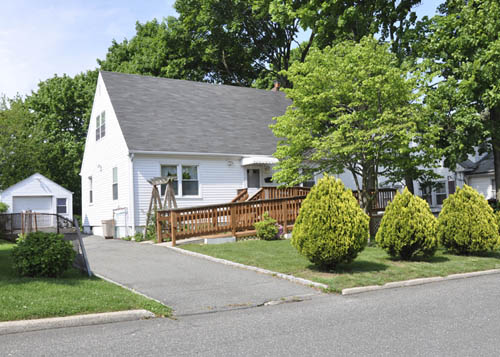 The Council’s Metro HRA owns 150 units of scattered-site housing in 11 suburban communities, which it rents to families with low incomes. From time to time, adjustments are made to homes for persons with disabilities, explained Terri Smith, Manager of Metro HRA.
The Council’s Metro HRA owns 150 units of scattered-site housing in 11 suburban communities, which it rents to families with low incomes. From time to time, adjustments are made to homes for persons with disabilities, explained Terri Smith, Manager of Metro HRA.
For example, Metro HRA installed a ramp on one home for a resident using a wheelchair. In another case, Metro HRA installed special flashing lighting for a resident with a hearing impairment to alert them when the smoke alarm goes off or when the doorbell rings.
“Metro HRA also has a reasonable accommodation policy in which we make exceptions to program rules for persons with disabilities in the Housing Choice Voucher program,” Smith said. Examples include allowing a customer more time to find a unit, allowing a live-in aid, and modifying the way Metro HRA communicates with the customer.
In 2014, the agency had a total of 206 Reasonable Accommodation Requests; of those, 173 were approved. More about Metro HRA services.
All the Council’s Livable Communities grants are contingent on the guarantee of recipient cities and their developer partners to follow all local, state, and federal regulations—including ADA. And in one case, the Local Housing Incentives Account grants, the Council will award additional points in the project ranking process to affordable housing projects that provide more than the minimum threshold of accessible units for people with disabilities.
Making the regional parks accessible to everyone
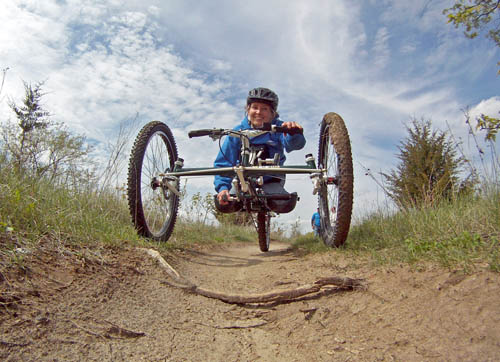 The Council’s 2040 Regional Parks Policy Plan requires regional park agencies—when planning regional parks and trails—to address accessibility, affordability, and other measures designed to ensure that facilities can be used by people with limited mobility. The ADA has many specific requirements for accessibility in public places, such as:
The Council’s 2040 Regional Parks Policy Plan requires regional park agencies—when planning regional parks and trails—to address accessibility, affordability, and other measures designed to ensure that facilities can be used by people with limited mobility. The ADA has many specific requirements for accessibility in public places, such as:
-
Parking spaces for people with disabilities
-
Wheelchair accessible restrooms, buildings, picnic shelters and other facilities
-
Paved trails within parks
-
Special facilities, programming, and accommodations for people with disabilities
For example, Minnehaha Falls Regional Park has a play area that is accessible to children and adults of all physical abilities. It features a rubberized covering under the whole play area so wheelchairs have easy access to all the play structures.
Another example is the Three Rivers Park District’s Outdoor Recreation School, which offers adaptive programs in cross-country skiing, kayaking, canoeing, and other activities. Several mountain biking trails in the district are open to people with adaptive bikes.